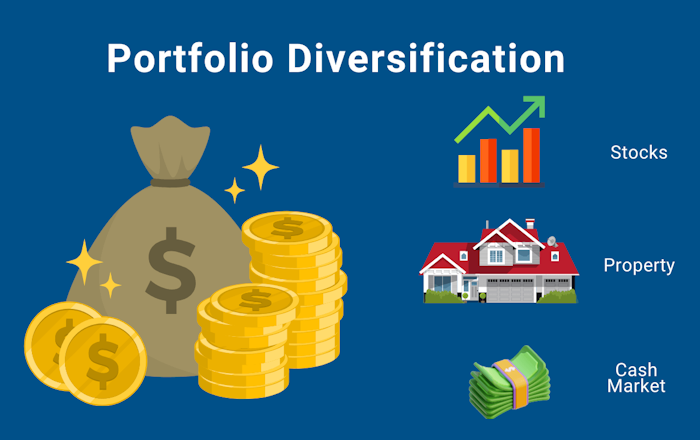Investing can be likened to being in a maze, especially in the financial world of constant evolution. However, as 2025 kicks in, smart investment strategies are becoming more accessible with each passing day, thanks to advancements in technology and increasing emphasis on diversification.
Whether you are an experienced investor or just getting into the market, having a clear game plan can make all the difference. Let’s dive into how you can diversify your portfolio like a pro and set yourself up for success.
Why Diversification Matters
You have probably heard the saying, “Don’t put all your eggs in one basket.” This age-old wisdom gives the meaning of diversification. Spread out your investments in different classes, sectors, and regions, and you will not lose all if one of those investments goes south. You will hedge a safety net around your financial future.
Imagine this: You invest all your money in tech stocks, and then a market downturn hits the tech industry. Without diversification, your portfolio takes a huge hit. But if you also have investments in real estate, bonds, or even alternative assets, the impact is cushioned. Diversification isn’t just about minimizing risk; it’s about maximizing opportunities.

Emerging Trends Shaping Investments in 2025
Before delving into the strategies, let’s take a closer look at some of the key trends shaping the investing landscape this year:
1. The Rise of Sustainable Investing: Environmental, Social, and Governance, or ESG factors, are huge in driving investment decisions. More and more investors seem to be keen on investing in companies that blend in with ethics and sustainability.
2. Digital Assets on the Grow: Cryptocurrencies, NFTs, and blockchain-based technologies grow further, holding both high risk and high rewards.
3. AI-Powered Insights: AI-powered robo-advisors and market analytics are two empowering instruments for investors to make better decisions. On some platforms, one may even find a text-to-voice reader, enabling hands-free consumption of financial data while multitasking.
4. Globalization of Portfolios: A larger number of investors are now interested in looking at other markets, especially growth opportunities emerging in developing economies.
5. Alternative Investments: From art to private equity, non-traditional assets are becoming increasingly popular for those seeking to diversify.
Building a Diversified Portfolio in 2025
Now that you’re familiar with the trends, let’s break down how to diversify your portfolio effectively.
Mix Asset Classes
At the core of diversification is balancing your portfolio across different asset classes, such as:
- Stocks: Equities are the best choice for growth, but they tend to be volatile. A mix of growth stocks and value stocks brings a good mix of high, possibly riskier stocks and steadier returns.
- Bonds: Fixed-income securities like government or corporate bonds provide stability and regular interest payments, making them a great counterbalance to stocks.
- Real Estate: REITs or physical property provide regular income and hedge against inflation.
- Commodities: Precious metals like gold and silver or energy resources like oil and natural gas are considered safe havens during periods of economic turbulence.
- Digital Assets: Allocate a few percent to cryptocurrency or blockchain-related projects, though be prepared for extreme volatility.

Diversification Within Each Class
After having chosen these asset classes, diversify within each category:
- Stocks: Spread your investments across sectors (e.g., healthcare, technology, energy) and regions (e.g., domestic, international, emerging markets).
- Bonds: Consider a mix of short-term, long-term, government, and corporate bonds.
- Real Estate: Look into residential, commercial, and industrial properties, either directly or through REITs.
By diversifying within each asset class, you’re better protected against industry-specific risks.
Balance Risk and Reward
Diversification doesn’t mean not taking risks but being wise about the very same risks. Assess your risk tolerance according to age, financial goals, and knowledge of the markets. For example:
- Conservative Investors: Emphasize bonds, dividend-paying stocks, and real estate investment trusts or stable real estate.
- Moderate Investors: Balance conservative assets with growth-oriented stocks and a small slice of digital assets.
- Aggressive Investors: Allocate primarily to stocks, alternative investments, and cryptocurrencies for high potential returns.
Leverage Technology for Smarter Decisions
In 2025, technology will be your greatest ally in investing. From AI-powered personalized recommendations to apps that make tracking performance and rebalancing your portfolio a breeze, the tools are endless. Even text-to-voice readers enhance accessibility, allowing you to stay informed without being tied to your screen.
To further streamline your efforts, consider creating video content that explains your portfolio’s performance or trends in the market. An easy video maker can help you produce professional-quality videos without requiring technical expertise, making it easier to communicate your investment strategy to clients or stakeholders in an engaging and visual format. Whether it’s a market overview or portfolio breakdown, these videos can help make complex information more digestible and accessible.
Don’t Overlook Alternative Investments
Alternative investments are gaining popularity-and for good reason. They offer diversification benefits and the potential for high returns. Here are a few options to consider:
- Art and Collectibles: Investing in fine art has become quite easy with platforms like Masterworks, and one need not spend millions.
- Private Equity: Exposure to startups or private companies can be taken through crowdfunding platforms or venture capital funds.
- Peer-to-Peer Lending: Returns on your money are provided by lending money directly to an individual or a business through platforms such as LendingClub.
Keep in mind that alternative investments often require a longer time horizon and may come with higher fees or limited liquidity.
Monitor and Rebalance Regularly
Diversification isn’t a one-and-done process. Market conditions change, and so should your portfolio. Regularly review your investments to make sure they’re in line with your financial goals. If one asset class outperforms and skews your allocation, rebalance to maintain your desired risk level.
For instance, if your stock investments rise considerably, you will have to sell some of your shares and reinvest the money in bonds or other underrepresented assets.
 Practical Examples of Diversified Portfolios
Practical Examples of Diversified Portfolios
To make things clearer, here is how a diversified portfolio could look for different investor profiles:
Conservative Portfolio:
- 50% Bonds
- 20% Stocks-blue chip companies
- 15% Real Estate
- 10% Commodities
- 5% Cash
Moderate Portfolio:
- 40% Stocks: mix of growth and value
- 30% Bonds
- 15% Real Estate
- 10% Digital Assets
- 5% Commodities
Aggressive Portfolio:
- 60% Stocks: emphasis on growth and international markets
- 20% Digital Assets
- 10% Real Estate
- 5% Alternative Investments
- 5% Bonds
Takeaways for Smart Investing in 2025
The investment world is in constant evolution, but one thing remains an absolute truth: diversification is your defense against a brittle portfolio. By spreading your investments across asset classes, sectors, and regions, you reduce risk and expose yourself to new opportunities.
Leverage technology that keeps you in the know and allows data-driven decision-making. Technology has simplified the process with robo-advisors and market analytics platforms, and innovations like text-to-voice readers make it even more convenient for busy investors.
Finally, remember that investing is a journey. Stay curious, keep learning, and don’t be afraid to seek advice from financial professionals. With the right strategies and mindset, you’re well on your way to achieving your financial goals in 2025 and beyond.





